Access to Collaboration Site and Physics Results
ATLAS News
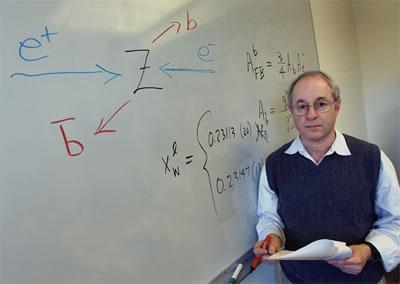
What if there is no Higgs boson?
– Physicists are confident they will soon be able to answer a fundamental question at the LHC: how do particles acquire mass? The simplest answer, the one given in the Standard Model of the fundamental particles, is that a single particle, the Higgs boson, endows the other particles and itself with mass. The Higgs boson does this by means of the "Higgs mechanism", which involves breaking a symmetry that would leave all Standard Model particles massless if it were not broken. However the Higgs boson is not the only way the Higgs mechanism might work.Read more →
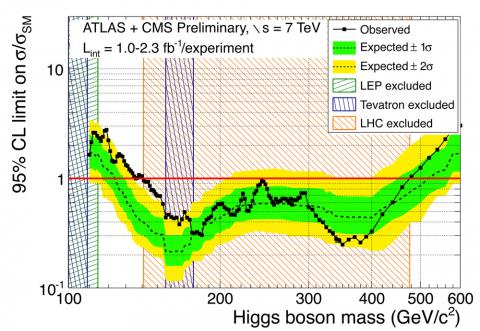
ATLAS and CMS combine summer '11 search limits on the Standard Model Higgs
– Perhaps the most anticipated result of the LHC involves the search for the Higgs boson, the only particle predicted by the Standard Model (SM) that has not yet been seen by experiments. The Higgs boson helps explain how elementary particles acquire mass. If the SM Higgs boson exists it will be produced at the LHC and swiftly decay into various known and well-studied particles, with the dominant decay products depending on the actual Higgs mass. ATLAS and CMS search for the SM Higgs boson using a range of decay products: two photons; two tau leptons; two b quarks; two W bosons; and two Z bosons. Analysing all these channels ensures that the search is sensitive to observing the Higgs irrespective of its mass.Read more →

ATLAS reveals latest results at HCP11
– The ATLAS Experiment presented its latest results at the Hadron Collider Physics Symposium 2011 in Paris, France (14-18 November). Many of the most recent searches and analyses are based on more than double the data available at the last big conference in August.Read more →
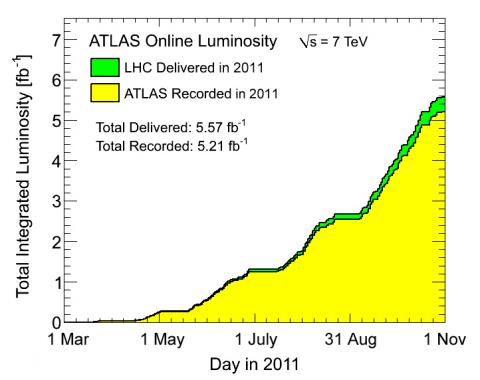
ATLAS reaches milestone: 5 inverse femtobarns of data!
– In an amazing year that has exceeded our expectations, the Large Hadron Collider has delivered, and ATLAS has recorded, over 5 inverse femtobarns (fb-1) of collisions. These units correspond to having 3.4 x 1014 or 340 000 000 000 000 total collisions. Most analyses presented at the last major conference (the Lepton Photon Symposium in August in Mumbai) made use of about 1 fb-1, so this is a big jump.Read more →

ATLAS goes Pop in Paris!
– A new French edition of the ATLAS pop-up book, Voyage au Cœur de la Matière (Voyage to the Heart of Matter), will be officially launched from the exhibition Entrée en Matière at Paris' Trocadéro on Tuesday, October 25th.Read more →
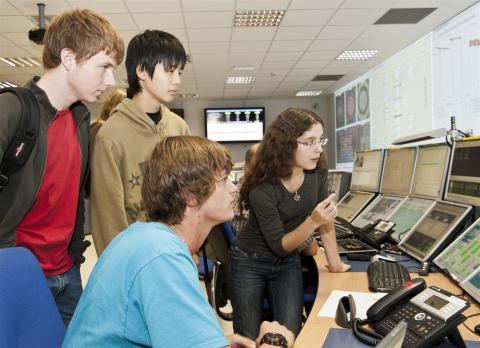
Moonlighting as a Physicist
– There was a lively buzz about the ATLAS Control Room last Friday night, September 23rd, as local high school students descended to get a closer look at just exactly what goes on at the front line of particle physics.Read more →
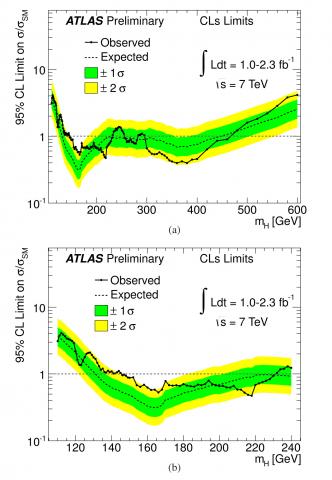
ATLAS advances in the search for the Higgs and New Physics
– The ATLAS experiment has continued to record data and to refine the analyses in the search for the Higgs boson and many other exciting signatures of new physics. The latest results are being presented at the Lepton Photon 2011 symposium in Mumbai, India, 22-27 August 2011. Since the previous meeting (the European Physical Society — EPS, Grenoble, France, 21-27 July 2011), the LHC has almost doubled the data provided to ATLAS.Read more →
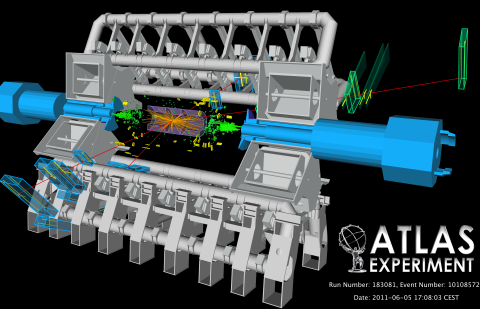
ATLAS Presents New Results at Lepton Photon 2011
– The ATLAS Collaboration is pleased to be presenting its latest results at the Lepton Photon 2011 conference in Mumbai 22-27 August 2011.Read more →
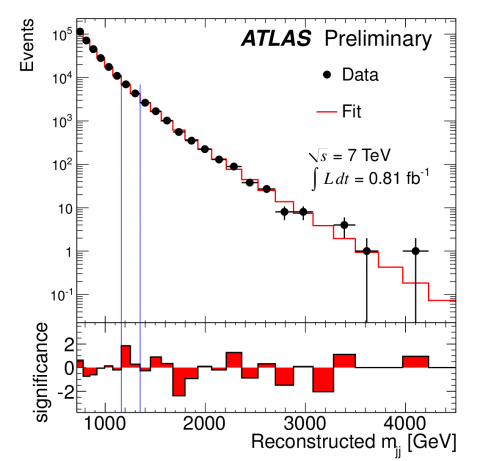
ATLAS results revealed at EPS HEP 2011 conference in Grenoble
– Many members of the ATLAS Experiment Collaboration have been at the European Physical Society's HEP 2011 conference in Grenoble, France, this week, revealing the results of 35 new and exciting physics analyses for the very first time.Read more →
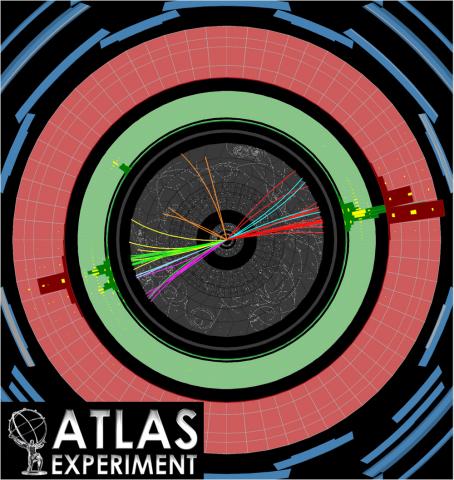
A Search for New Physics Processes using Dijet Events
– The ATLAS Experiment has extended the energy frontier of searches for new particles and new processes beyond those of the Standard Model by studying collision events with so-called "dijets".Read more →




